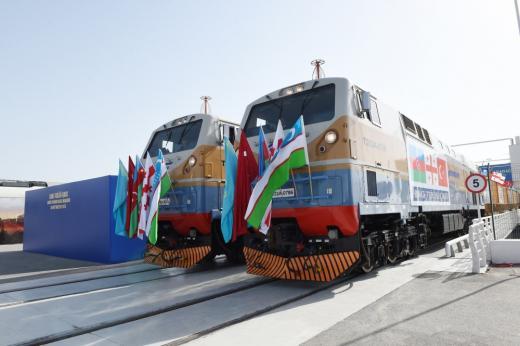Kazakhstan eyes transporting cargo via Baku-Tbilisi-Kars

By Rasana Gasimova
Delivering goods from China to Europe via Azerbaijan, Baku-Tbilisi-Kars is attractive for countries of Central Asia, including Kazakhstan, as it contributes to the growth of the countries’ transit potential, expansion of foreign economic relations and the identification of new points of conjugation.
Kazakhstan may start transporting goods via Baku-Tbilisi-Kars (BTK) railway, local media report referring to the Azerbaijani government.
This issue was discussed at a meeting of the Azerbaijan-Kazakhstan intergovernmental commission on economic cooperation held in October 2019 in Baku.
Kazakhstan noted the great interest of its shippers to the BTK route and announced its willingness to discuss transportation along this corridor in multi-purpose wagons,” the government said.
The Kazakh side proposed that Azerbaijan unifies port charges for bulk carriers as part of a feeder service between Aktau and Baku.
“Azerbaijan was proposed to adjust port charges collected from dry cargo (feeder) vessels flying the flag of Kazakhstan in Azerbaijani ports to the size of port charges levied on vessels flying the Azerbaijani flag in the port of Aktau,” the government said.
To expand cooperation in the transport sector, the parties also agreed to hold a regular meeting of the Azerbaijan-Kazakhstan Commission on International Road Transport in the first half of 2020.
A regular feeder service between Aktau and Baku was lauched in April 2019. LLP “NMSK” Kazmotransflot is the marine operator of this project. Feeder ships operate on a weekly basis.
Kazakhstan expects to transport up to 75,000-100,000 containers by the feeder ships operating between Aktau and Baku. Previously, Kazakhstan transported containers only by ferries and bulk carriers. They mainly transported grain and metal.
The BTK railway was put into operation on October 30, 2017. The total length of the railway is 826 km.
The BTK railway has been constructed on the basis a Georgian-Azerbaijani-Turkish intergovernmental agreement. The project implementation began in 2007 and construction began in 2008. The line is intended to transport one million passengers and 6.5 million tons of freight at the first stage. This capacity will then reach 3 million passengers and 17 million tons of cargo.
The main purpose of the project was to improve economic relations between the three countries and attract foreign direct investment by connecting Europe and Asia.
---
Follow us on Twitter @AzerNewsAz
Here we are to serve you with news right now. It does not cost much, but worth your attention.
Choose to support open, independent, quality journalism and subscribe on a monthly basis.
By subscribing to our online newspaper, you can have full digital access to all news, analysis, and much more.
You can also follow AzerNEWS on Twitter @AzerNewsAz or Facebook @AzerNewsNewspaper
Thank you!
